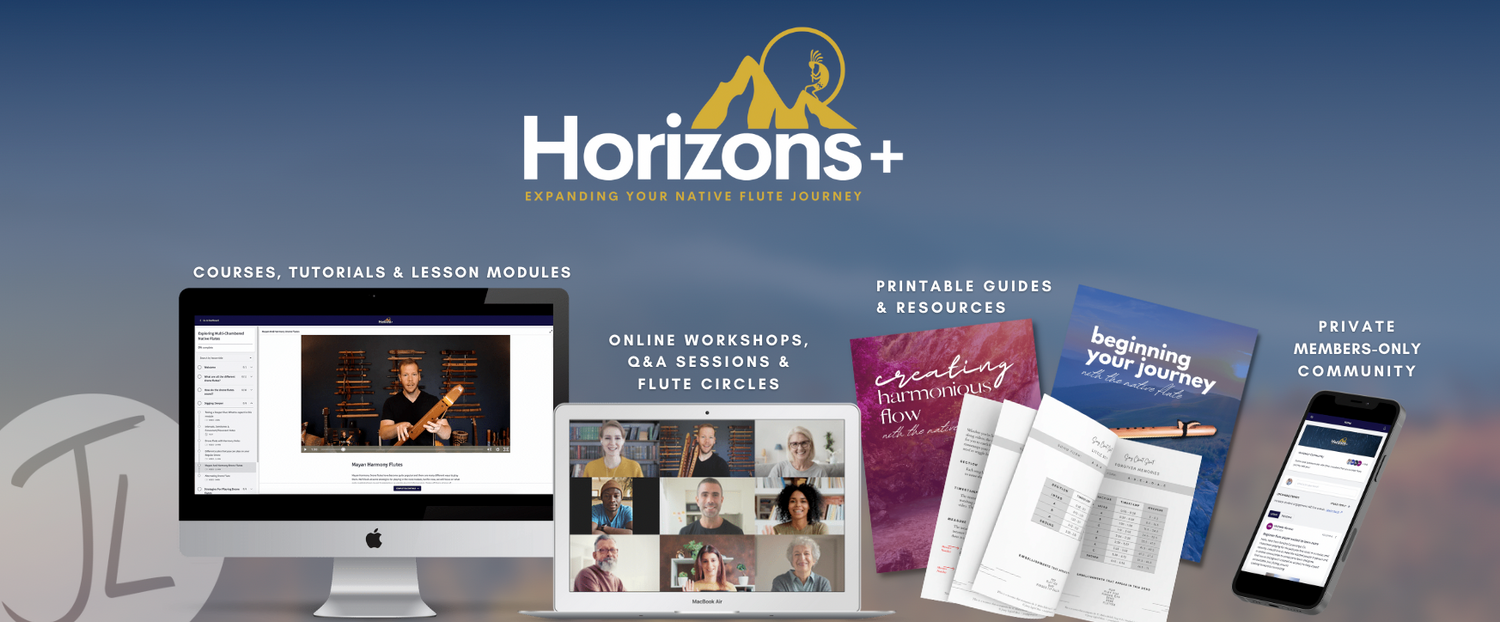Discover Your Flute Playing Strengths & Weaknesses
Discover Your Flute Playing Strengths & Weaknesses

When it comes to playing Native American drone flutes, there are so many things to consider...
I remember what it was like to huff and puff for breath, land on sour notes and feel awkward playing these types of flutes when I started playing drone flutes.
In my e-course, Exploring Multi-Chambered Flutes, I give you tons of strategies, frameworks, advice and help just like the four tips that I'd like to share with you today for free...

Dealing with a mouthpiece that has several holes in it can be really challenging. If you play all the chambers at the same time, it can be a mouthful, or if you want to just single out a flute it can be challenging with air leaks and whistle noises.
This may feel weird at first, but using your lips and the corner of your mouth is one of the best ways to segregate the airflow so it's only going where you intend. Practice angling the flute a bit and using the corner of your mouth so you can play all the different options that come with your flute. When you do this, make sure that you take a few breaths and also practice the speed at which you break contact with the flute and return. This is a great exercise to practice your recovery.

Consider which hand you play on top or bottom, left or right sides of the flute. It may feel awkward at times, but you could avoid some cramping or crowding by switching your hand positions around. Pay close attention to what you feel in your hands and wrists as well as the sounds you're producing.

When playing a drone flute where you need to reach over a barrel of another flute or the flute is just larger in size, you may want to remove any rings that you're wearing so that they don't tap or click against the side of the flute. This will definitely make a difference if you're playing into a microphone or recording!

When you're playing a regular drone, with one or two blocks over the sound hole, it's important to understand how the drone is responding. Sometimes the drone will want to just hang out on the fundamental note, other times it may jump up to the octave, and in some cases, it may be so sensitive that it wants to hang out on that octave note and not come back down. What your drone flute does and how it reacts is based on a couple of things; how it was made, how you are playing it and what your preference is.
Some Native American drone flutes are stubborn and we learn to love it as it is, or we don't get beyond our preference and we part with that flute. If you have a drone flute that hangs out on fundamental and you want it to jump, try pushing the block into the sound hole area a little more, even if you have to kind of twist the one wide block. If you have a separate block for the drone side, just move it forward. If you have a drone flute that is too sensitive and you want it to hang back on the fundamental a little more, push or twist that block the opposite way, back towards you away from the splitting edge.
Note: Just know that when you move the block forward or backward, you will be adjusting the pitch of the flute as well as changing the voice a little bit. Moving the block back towards you (when playing), the flute may become a little more raspy and airy sounding. Pushing the block forward toward the foot-end of the flute can make the voice a bit more nasally and thin.

Get access to courses, workshops, lesson modules, LIVE Q&A Sessions, Flute Circles a members-only commmunity and so much more.
Gain confidence and increase your proficiency!